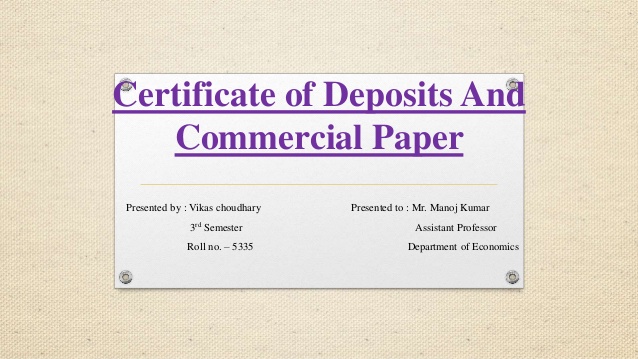Contents
This means that the consumer can now afford a product that they could not have earlier. Developed first by Francis Ysidro Edgeworth in his seminal 1881 book, the theory of Indifference Curves is a vital component of ordinal utility and consumer theory. Used worldwide to predict and judge consumer behavior, the approach prefers the study of consumer preferences, instead of measuring them in terms of money.

The Marginal Rate of Substitution is the rate at which the buyer should sacrifice units of 1 commodity to acquire yet one more unit of another commodity. Now think about that we label with a plus sign every level in the space that’s most popular to point A after which label with a minus signal every point within the area that time A is most popular to. If we then draw a line that separates the plus from the minus signs, we are going to acquire the indifference curve proven within the above determine.
It is the functionality of an Indifference Curve that can be explained under many assumptions. It is known that each and every Indifference Curve has an origin. Another fact is that there are no intersections between any sorts of pairs of Indifference Curves.
There are three main properties of indifference curves:
Because of this relationship, the indifference curve is bowed inward (i.e., convex). An indifference curve is a contour line where utility remains constant across all points on the line. Each point on an indifference curve represents a consumption bundle, and the consumer is indifferent among all consumption bundles on the indifference curve. The reason for the negative slope is that as a consumer increases the consumption of commodity X, he/ she sacrifices some units of commodity Y in order to maintain the same level of satisfaction.
It is therefore not necessary that the Indifference Curves should be parallel to each other. Let us take two Indifference Curves IC1 and IC2 lying to the right of IC1. At the point P the consumer gets OM of oranges and ON of bananas. At the point Q though the number of bananas remains the same i.e., ON, yet the number of oranges increases from OM to OM1.
Four Properties Of Indifference Curves
Although they come in many shapes and sizes, most of them share a few important properties. Thus, we will look at the four most important properties of indifference curves in more detail below. Indifference curves may be straight strains if a slope is fixed, resulting in an indifference curve represented by a downward-sloping straight line.
What will happen if the consumer’s income remains unchanged at $30, but the price of grapes falls to $5 per kg and $4 per kg?. The line running through the equilibrium point is known as the income-consumption curve, which illustrates the income effects on consumers’ equilibrium. Hence, no point On two different indifference curves can be common to each; The two curves will have to be perfectly independent of each other. If a consumer could have more of one commodity without a corresponding fail in other commodities he would have achieved a higher level of satisfaction.
- The shape of an indifference curve is helpful to understand whether commodities under consideration are substitutes or complements.
- Since a concave curve violates the fundamental principle of economics, the indifference curve cannot be concave.
- She is thus prepared to surrender 2 days of snowboarding for a second day of horseback using.
Observing such we cannot tell that which of these indifference curves give higher satisfaction. It is not possible to answer in this case as two indifference curves cannot yield the same level of satisfaction. However, we have no hints on how much extra satisfaction or utility an upper indifference curve directs.
Indifference Curves are convex to the origin
The slope of the curve shows the rate of substitution between two goods, i.e. the rate at which an individual is willing to give up some quantity of good A to get more of good B. If we assume that the individual likes both goods, the quantity of good B has to increase as the quantity of good A decreases, to keep the overall level of satisfaction the same. Because both axes each represent one of the two goods, this relationship results in a downward sloping curve.
Combination Q has been taken on a higher indifference curve IC2 and combination S on a lower indifference curve IC1. The slope of the indifference curve at any point is the negative marginal utility of good A as a proportion of the marginal utility https://1investing.in/ of good B. It indicates that the optimal consumption bundle – the marginal rate of substitution between goods A and B – is the ratio of their prices. The convexity of the indifference curves indicates diminishing marginal rate of substitution .
Let us understand this with the help of following indifference schedule, which shows all the combinations giving equal satisfaction to the consumer. Consumers would prefer to move in the direction indicated by the arrow in the figure. Such a diagram is known as an indifference map where each indifference curve corresponds to a different indifference schedule of the consumer. It is like a contour map showing the height of the land above sea-level where instead of height, each indifference curve represents a level of satisfaction.

Another characteristic of the indifference curve is that an indifference curve does not touch the x-axis. In the diagram, clearly shows and clarifies characteristic of an indifference curve. This property suggests that an indifference curve has a negative drop. In the case of any consumer, the utility refers to gain from the consumption of two commodities. In the curve, the quantity consumed by B2 will compensate for the increase in the amount consumed by B2.
The numbers can be in the ascending order of 1, 2, 4, 6 or 1, 2, 3, 4, etc. If we plot the indifference schedule into the graph, we get the indifference curve. Hence the graphical exhibition of the indifference schedule gives an indifference curve. The following graph shows the graphical presentation of the above indifference schedule. In the Figure 6, the tangent at point A makes a bigger angle on the X axis than the tangent at point B which makes a smaller angle. This shows that the marginal significance of x in terms of y is declining as the consumer travels down an indifference curve and has more units of x.
Indifference towards risks and uncertainties
Hence, an indifference curve to the right always represents higher level of satisfaction. Because of this reason, the consumer always tries to move outward to maximize his level of satisfaction. Monotonic preference means that a rational consumer always prefers more of a commodity as it offers him a higher level of satisfaction. In simple words, monotonic preferences imply that as consumption increases total utility also increases.
Assumptions and Properties of Indifference Curve
The principle of diminishing marginal utility is illustrated here as the total utility increases at a diminishing rate with additional consumption. It is evidenced by figures D, E, and F having decreased marginal utility. Therefore, the principle of diminishing marginal utility indicates that each additional unit of consumption adds less to the cumulative utility than the four properties of indifference curve previous unit. An indifference curve represents various combinations of two commodities. If an indifference curve touches horizontal axis or vertical axis, it implies that the customer prefers only one commodity because when it touches axes, one of the commodities becomes zero quantity. Hence, an indifference curve does not touch either horizontal axis or vertical axis.
As illustrated above on the indifference curve map, the farther out from the origin, the more utility the individual generates while consuming. If a curve does not have a negative slope as shown in figure 3, it cannot be an indifference curve. The standard model of consumer choice assumes that consumers make decisions by maximizing their utility, which is typically represented by an indifference curve. Second, all points on an indifference curve provide the same level of utility. This means that if you are indifferent between two points on an indifference curve, you would be just as happy with either combination of goods. An indifference curve is a graphical representation of how much of one good or service a consumer is willing to give up in order to obtain more of another good or service.

